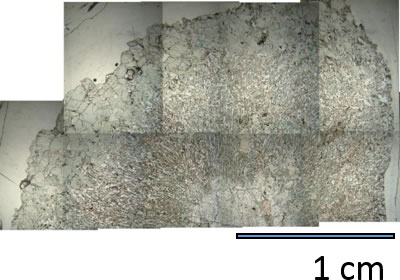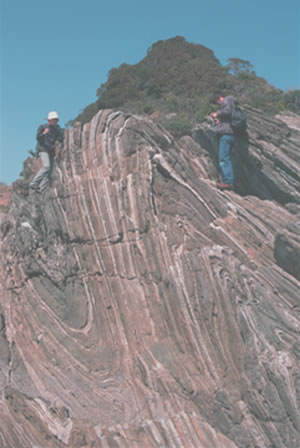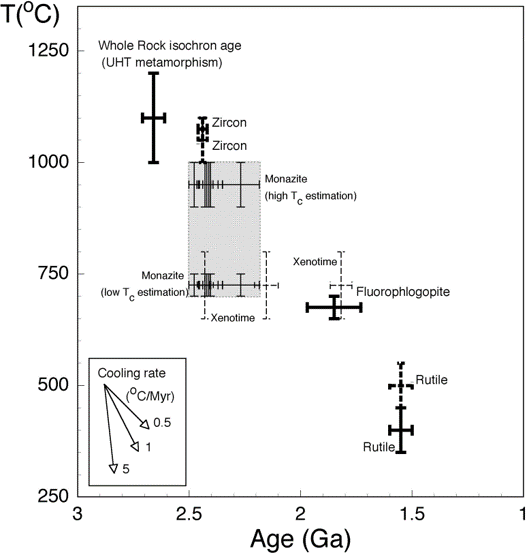
HOME / Departments / Earth and Planetary Sciences / Petrology and Volcanology
Petrology and Volcanology
-
- IKEDA Takeshi, Associate Professor
- MIYAMOTO Tomoharu, Assistant Professor
-
- Study of dynamics of volcanic eruptions, formation mechanism of rock pattern, vesiculation, crystallization and flow of magmas.
- Study of physico-chemical processes in the deep crust and upper mantle using metamorphic rocks.
- Study of the origin of rocks on the basis of the geochemical theory.
1. Evolution of microstructure in metamorphic rocks

In the crust and mantle of the Earth, materials are composed of aggregates of mineral grains that undergo deformation and chemical reaction. The features of metamorphic rocks can be accounted for in terms of metamorphic reaction and plastic deformation in the rocks.
We describe mineral assemblage and chemical composition of constituent minerals, which is employed to determine physical condition such as pressure and temperature under which the system was equilibrated. Microstructural features such as grain-size distribution of mineral, spatial distribution and arrangement of minerals would provide information on strain and strain rate of deformation, mechanism of grain growth, duration time of high-temperatures (metamorphism) and temporal change of the physical condition. Quantitative characterization of the microstructures leads us to the understanding of these features.
2. Origin of rocks on the basis of the geochemical theory

Common rock is composed from 10 major elements and other trace elements. The compositions are characterized by natural rule, which is restricted by origin of the rock and physical and chemical conditions of rock forming process; compositions of igneous rocks are discriminated by varieties of original mantle and process of differentiation during igneous activities from the mantle, and mass transfer and isotope homogenization during metamorphism are recognized from compositional research for metamorphic rocks, and these affect assemblages and quantities of constituent minerals in it. Although such phenomena and process could not be observed directly since they are caused in the deep basement under the ground, they are able to be considered from elemental behaviors during compositional evolutions on igneous and metamorphic rocks. Petrographic evidences are also important for considering the rock origin, since decoding of petrographic textures gives us qualitative information, which is often removed by geochemical analyses. Additionally, chronological research by radiometric dating give us information for understanding geological evolutions, and earth's history as their accumulations. Effective considering about the petrographic textures, the compositional characters, and the chronological evidences, without any contradiction, finally concludes petrologic research for revealing rock forming process. And then, we clarify the history of all geological units on the earth after compiling such evidences.
